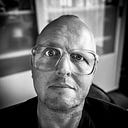Happyplaces Project
Happyplaces Stories (video)
Space outside the atmosphere is infinite. Within the atmosphere, space has become a scarcity. Not only the physical space but also mentally, timely, virtually. Everybody — whether it is an architect, a branding specialist, a teacher, a writer, an entrepreneur, a scientist, a designer, a musician, a CEO, a politician, a parent — is a facilitator space for you and the space around you. Asked and unasked they create space for others, influence it, or take it away.
With Happyplaces Project I’m investigating the motives, ideas, methods, opinions and insights from these space creators in a quest to find all dimensions of space. And how they try to help people find their happy place in those spaces.
The Happyplaces Project is an ongoing quest that investigates all dimensions and occurrences of space. There are a lot of things you can not see that profoundly influence decisions and behaviour. The project aims to learn from a wide variety of people how they create or facilitate space and where their boundaries lie, to map these and to translate the findings into hands-on tools that can help to create better spaces where people can find happy places.
During my work at the Royal Academy of Art in The Hague, my work at and with creative agencies, a reoccurring theme with the creatives was that they ‘did not feel that had the space to create what they wanted to create’.
I thought that was fascinating. You would expect that the highest aim of a creative agency would be just that: to create a space where their people could create their best possible work, to feel safe and have the freedom to create their best creative work. Because, in the end, that is what you’re selling: applied creativity. Creativity needs space to sprout and to grow. But apparently, there were limiting and restricting circumstances that were affecting the space in which people had to be creative in. But what these were, didn’t become really clear. Because there wasn’t one answer, one sole reason that could be easily fixed.
Of course, when you are in the field of applied creativity there are the apparent restrictions that could potentially affect this freedom, like budgets, time, (lack of) knowledge, the client’s context or wife☺, etc. But I also learned that it had to do with salary, recognition, respect, the kind of coffee, colleagues, issues at home, the kind of light, colours on the wall, the level of influence in a project. And also in the daily environment, the atmosphere, rituals, and many many other objective and subjective things. Where most of the time, the subjective things were the most limiting. These involved other people, behaviours, relationships. I learned that, in most cases, colleagues don’t really know each other. They just share their work-life and not much else, and that’s why they lack understanding of why their colleagues do, think, act, behave as they do. And when then communication also fails, people suffer from everything unsaid, unseen, unfelt and unnoticed and its consequences.
Space also plays an important role in other projects I’m involved in, like the organisation of conferences and festivals. Ideally, these events should be places where people feel comfortable, feel free to be inspired and can easily and stresslessly meet new people. Places where you embrace serendipity. Where people can be fully focussed on the experience, be fully immerged in it. Getting that right turned out to be challenging. Of course, the content should be right, unique, special, worth it to free some time from people’s busy calendars, but ideally it is more. Places where people can not only consume new knowledge, get access to it, but also have opportunity to apply it and can even create new knowledge. In a great atmosphere, with great food and where the audience is just as interesting as the speakers and people on stage. And where people don’t feel the urge to hide behind their devices, but engage to exchange with others. That is what always pushed us, as a team, to make an event like PICNIC Festival really special with a lot of attention to detail. Because we believed that creating this ambiance helped to create valuable and meaningful meetings of mind and heart. We did everything within reach to create a safe space to feed curiosity and to meet new people easy, stressless and fun.
For a big retail property company I worked for, space is of course an important topic. They wanted to move from a square metre driven company to creating favourite meeting places. The main aim was to create places where people want to be even if they didn’t need to be there. And to, when to were there anyway, maybe even buy something.
Obviously, this meant a radical shift, moving from the ‘old world’ idea (where people had to go to a store to buy something and also had a relation with certain retailers to always go their to buy their favourites) to the ‘new world’ (where people can buy things anytime, any place, anywhere from any who, aided by personal digital technology).
How do you create something that is favourite? How do you connect heads to hearts? How do you make people meet? And how does is resonate in a space? And where does the space start and end? We created several scenario’s that could potentially help to shift their business from old to now, and maybe even to new, in multiple dimensions that affected the physical spaces, but also mentally, timely and virtually. Within these dimensions we found new ways where their places could occupy new adaptive spaces, as a foundation for a sustainable business as a company. And, as lively, relevant and vibrant places within communities.
With Project Dreamschool, a project I initiated some years ago, and in working with and for schools since then, space is also a main subject: How do you create space for students and teachers to develop best? Spaces to foster, sprout and develop everyone’s talents? What do you need for that? What should learning spaces and schools look like? What do you need to organise that? Frum, founder of the Noordwijkse School learned me the basic principles for learning, actually quote simple: safety and curiosity. But how do you create an environment like that? How do you organise that between people?
For a big food retailer I was invited to advise on their social media strategy. My belief was that they should not necessarily do something with it. Social media is not a goal — it are channels with which you can interact with customers. That it was more important to look at the space in their brand and the space they wanted to take in with their brand and their stores, in their customer’s lives. Apparently they succeed to play a relevant role with their physical stores. For daily groceries, the stuff you need every day, but also for the community, as a social meeting place. Their stores are social media. Where people go to to buy food to eat with their families, friends and others. Where they meet their neighbour, have casual conversations while standing in line. To me, it was far more interesting to find ways to increase their brand space, to help them fulfil a relevant role in their customer’s daily lives. And maybe, social media could fulfil a role in making that happen.
All these encounters with ever new appearances of space were fascinating me. Obviously there was more to explore. So I decided, together with starting Happykampers, to investigate the subject.
Room for thought
In Paris I mentioned my space thoughts for the first time with a lady I met there, Marie Elisabeth. We had an amazing conversation and pink Champagne. She totally surprised me with her rich stories, wisdom and insights. She sent me a blurb of text afterwards. Thoughts and ideas about room, from a philosophical, psychological and historical perspective. Unfortunately, I didn’t record Marie Elisabeth’s story in Paris. And that is exactly what I’m doing now with Happyplaces Project.
From thought to project
What fascinates me is that a lot of people are busy with this subject, all in their own way, not always consciously. We all think about the space we need and take and the space we want to have. In that search, we have talked a lot about personal drivers, wishes, opportunities. But professionally we’re also always working on this. To create space in the heads of audiences, target groups, visitors, clients to hear that they like or love what we do, that they think it ís special or even remarkable.
What I’m searching for with the Happyplaces Project is a ‘golden recipe’ to create happy places with. What do you need when you can start from scratch? It can be a ‘mental panic (safe) room’ how Fons Schiedon (artist, also the maker of the project’s leader, see above) called it. Or the place where you find yourself and are comfortable, how Dorien described it. Dorien was one of my students at the department Interactive/Media/Design at the Royal Academy of Art, and she shared that the study had helped her to find out that she would never be a designer but that it helped her to find herself. She found her ‘happy place’.
So how do people create space? In any discipline? How do you create physical spaces where people can be happy and find their happy place? How do you create space in a brand? How do you create products that cause that effect, connecting to heads and hearts? How do you create the right circumstances to make give people that feeling? Can you direct that? Can you design that? How? To figure that out, I’m interviewing a wide variety of people. And record that on video and distill conclusions from it later. And than bundle it and make a book-app-film-documentary-whatever from it. But first collect. Then shape. Than share.
Slow
Happyplaces Project is a slow project. Like slow food. I’m in no rush. The website will go online when it is done and I’m happy. The length of the interviews is not determined by what is ‘the standard’ — if someone needs more time we take the time.
Where is it heading?
The aim? Well, that continuously shifts. The more people I meet the more ideas I get, the more possibilities and opportunities arise. I’m now organising small intimate events called Happyplaces Moments to connect people to people, ideas to people, people to ideas and ideas to ideas. Organically, sincerely. I will hand-pick these people. Quite likely it’s becoming a book as well next year and I’m working on a way to make findings accessible so people can then apply it in different contexts. This will result in a map, titled An Illustrated Map of the Observed Universe of Spaces where People find Happyplaces, illustrated by Stang. And, derived from that, a ‘method’ that will help to make better informed, more relevant and valuable decisions. There will be an online closed open environment as well. This will be open for anyone, when you find your way in through sincere interest. And a whole lot more. So in the end, my simple personal aim is to meet and talk with a lot of new people, and to learn from them and to feed my curiosity. But meanwhile, the urge to share is building up.
As said before, no rush.
Thank you for taking the time to read the article and/or watch the video. I hope that you enjoyed it. If you did, don’t forget to hit the clap button (the icon of the hands below or on the left side of your screen) so I know I connected with you. Follow me here on Medium to automagically see new stories pop up on your Medium homepage. Or follow me on LinkedIn, I also share updates and stories there. Thank you for your support!

